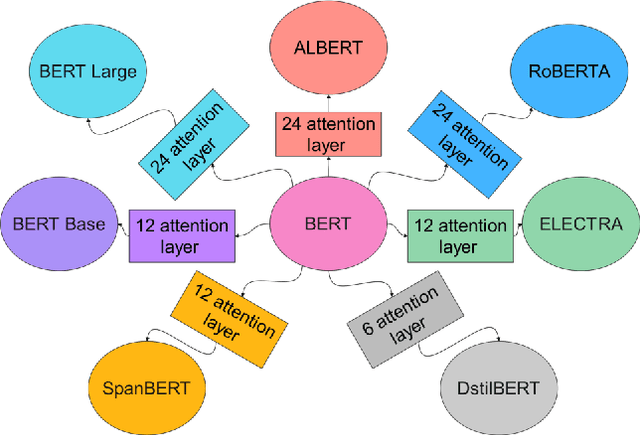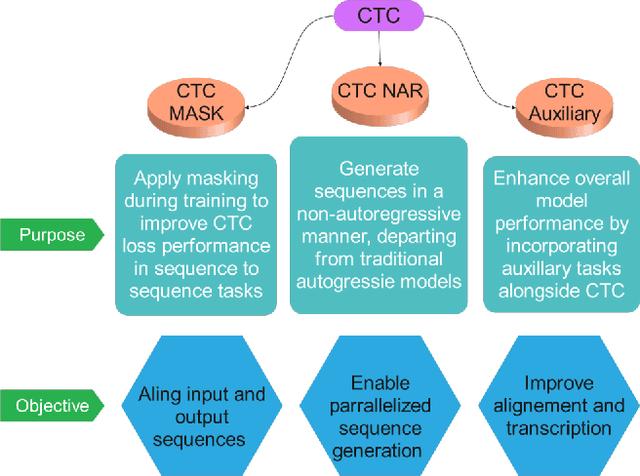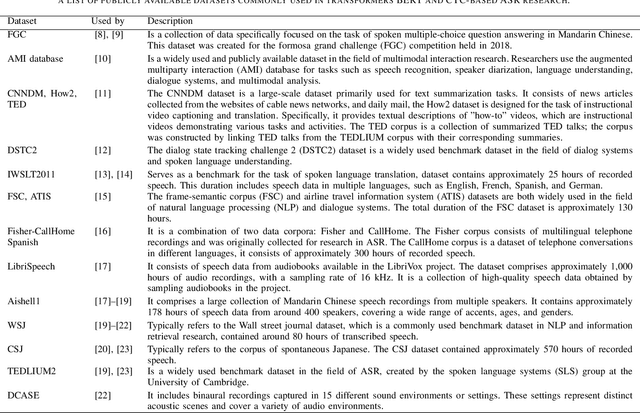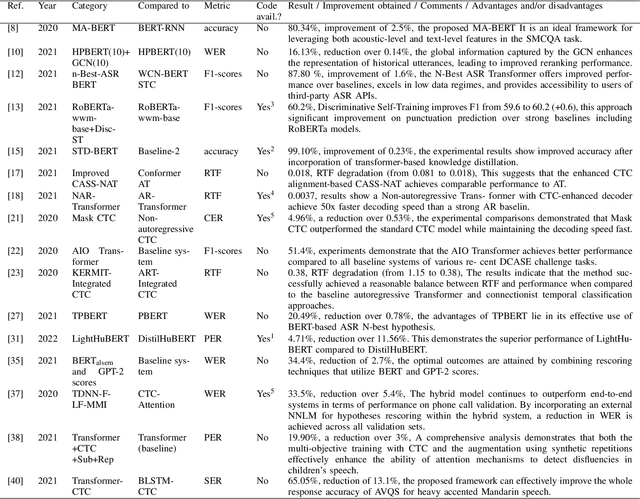Ahmed Cherif Mazari
Automatic Speech Recognition with BERT and CTC Transformers: A Review
Oct 12, 2024



Abstract:This review paper provides a comprehensive analysis of recent advances in automatic speech recognition (ASR) with bidirectional encoder representations from transformers BERT and connectionist temporal classification (CTC) transformers. The paper first introduces the fundamental concepts of ASR and discusses the challenges associated with it. It then explains the architecture of BERT and CTC transformers and their potential applications in ASR. The paper reviews several studies that have used these models for speech recognition tasks and discusses the results obtained. Additionally, the paper highlights the limitations of these models and outlines potential areas for further research. All in all, this review provides valuable insights for researchers and practitioners who are interested in ASR with BERT and CTC transformers.
Enhancing IoT Security with CNN and LSTM-Based Intrusion Detection Systems
May 28, 2024



Abstract:Protecting Internet of things (IoT) devices against cyber attacks is imperative owing to inherent security vulnerabilities. These vulnerabilities can include a spectrum of sophisticated attacks that pose significant damage to both individuals and organizations. Employing robust security measures like intrusion detection systems (IDSs) is essential to solve these problems and protect IoT systems from such attacks. In this context, our proposed IDS model consists on a combination of convolutional neural network (CNN) and long short-term memory (LSTM) deep learning (DL) models. This fusion facilitates the detection and classification of IoT traffic into binary categories, benign and malicious activities by leveraging the spatial feature extraction capabilities of CNN for pattern recognition and the sequential memory retention of LSTM for discerning complex temporal dependencies in achieving enhanced accuracy and efficiency. In assessing the performance of our proposed model, the authors employed the new CICIoT2023 dataset for both training and final testing, while further validating the model's performance through a conclusive testing phase utilizing the CICIDS2017 dataset. Our proposed model achieves an accuracy rate of 98.42%, accompanied by a minimal loss of 0.0275. False positive rate(FPR) is equally important, reaching 9.17% with an F1-score of 98.57%. These results demonstrate the effectiveness of our proposed CNN-LSTM IDS model in fortifying IoT environments against potential cyber threats.
 Add to Chrome
Add to Chrome Add to Firefox
Add to Firefox Add to Edge
Add to Edge